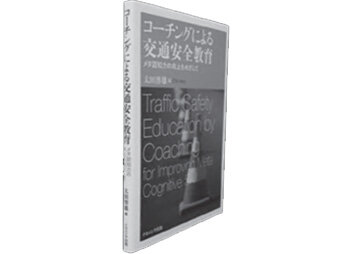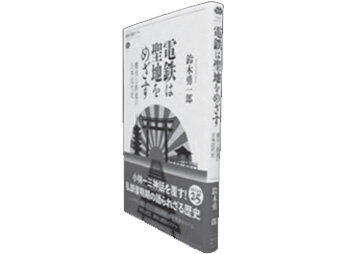No.41 In 2019
Title
Traffic Safety Education by Coaching for Improving Meta Cognitive Skill
Recipient
Hiroo Ota (Professor Emeritus, Tohoku Institute of Technology)

Reason for award

This paper focuses on the use of coaching, an educational method that has received much attention in recent years as a method of teaching traffic safety. Conventional teaching, which focuses on indoctrination, is a form of instruction that actively teaches and instructs knowledge and skills to the learner, and is therefore effective for beginners with limited knowledge of the basics; however, when used with experienced drivers, such as in corporate training and safety education for the elderly, there are limits to the effects of simply saying things like "don't forget to stop at stop signs." This is because instructional impositions by others tend to create a feeling of irresponsibility and reduced motivation, while making decisions on one's own tends to build a sense of responsibility and increased motivation. This paper is divided into two parts: theory and practice. We will introduce the concepts and characteristics of coaching, as well as specific educational techniques for supporting and guiding people to set their own goals and to increase their motivation to achieve them. In particular, the practice part of the paper includes instructions on the differences between the target audiences for traffic safety education, using specific examples, and discusses traffic safety education for elderly drivers, which has recently become a social problem; this form of education has attracted attention as a way to prevent accidents involving elderly drivers.
The theory part of the paper starts with an explanation of the basic concepts of teaching and coaching, and the differences between them; it then introduces the GROW model, which shows a common understanding of the process of coaching through dialogue between learners and coaches, and the SMART model, which is used to establish the objectives for the process. This paper includes specific examples and explanations of traffic safety education scenarios, as well as specific points that should be considered, and it can also serve as a guide to the GROW model. Another feature of this paper is that it can readily be used in the field of transportation education. There is a reference section on the basic techniques of coaching included at the end of Part 1; it provides the importance of building trusting relationships as an attitude toward coaching, as well as expressions that can be used for listening, questioning, approval, and feedback in a variety of situations.
The practice part of the paper introduces the characteristics of coaching for different target audiences, such as beginner training, corporate safety training, professional driver training, and license renewal training for older drivers, and specific points to bear in mind for these. For example, to improve the effectiveness of corporate safety training, which is passive, ritualistic, and done by rote, and which brings a significant burden when it comes to preparing materials, one could use the incident process method and mind mapping to eliminate the need to prepare materials in advance, and to create an opportunity for participants to actively improve their information-gathering (questioning) skills. The second half of Part 2 includes case studies on the development of educational programs that make use of coaching, as well as examples of educational practices that use coaching in traffic safety education, which can help make it easier to imagine traffic safety education programs when developing one.
As described above, we appreciate and commend the systematic and practical application of coaching, which is expected to have a further effect on learning, even for people in traffic safety education who may feel the limitations of teaching.
Title
Electric Railways Aim to Reach Holy Places History of Modern Japanese Cities and Railways
Recipient
Yuichiro Suzuki (Curator, Kawasaki City Museum)

Reason for award
"Electric railways" are defined here as "the group of railway companies that emerged in major cities such as Tokyo and Osaka after the Russo-Japanese War through the 1920s, and which are connected to today's major private railway companies." Through careful analysis of a number of case studies, this paper disproves and corrects the common belief that electric railway companies developed suburban areas by creating rural residential areas, department stores attached to terminal stations, and amusement parks along the railways. Based on the results of the author's many years of research on the development of suburban residential areas by private railways, urban development, and railway history, there is the interesting assertion that, contrary to the common belief that the railway-centric suburban development model created by Hankyu's Ichizo Kobayashi -- applied by Tokyu Corporation's Keita Goto and Seibu's Yasujiro Tsutsumi -- was what created urban spaces, rather, the biggest driving force behind the development of electric railways was visits to temples and shrines. The Minoh Arima Electric Railway, the predecessor of the Hankyu Electric Railway, connected Osaka with Minoh, where there were many historic temples and shrines, and Takarazuka, located in the foothills of Arima Onsen (a hot spring town); the railway mainly transported visitors to shrines and temples for pleasure outings. Because modern electric railways are used primarily for commuting to work or school, it is often assumed that this has been the case from the beginning, but the existence of a large number of families supported by salaried workers who live far from home, which this assumption is based on, is a phenomenon that largely emerged in the early 20th century; the author demonstrates that the proportion of work and school commuters on electric railways before the war is overestimated.
After an introductory chapter describing the relationship between electric railways and temples and shrines as the core premise, Chapter 1, "Profiles of Shrewd Chief Temple Priests," looks at the Narita Railway, of which the chief priest of Shinshoji Temple was a major shareholder, and the subsequent establishment of the Keisei Electric Railway, and analyzes how the "Three Great Chief Temple Priests of the Meiji Era," among others skilled in management, used the electric railway to grow Shinshoji Temple into one of Japan's greatest temples, attracting many pilgrims and incorporating Narita into the suburbs of Tokyo. In Chapter 2, "The Rise of Temples and the Development of Places of Interest," the author analyzes the development of Kawasaki as a vacation destination in the suburbs of Tokyo through case studies of Kawasaki Daishi Heikenji Temple and the Keihin Electric Railway, and points out how the industrialization of the Taisho era (1912-1926) led to the Keihin Electric Railway's development of a line leading out to the Miura Peninsula, creating a new type of pleasure travel. Chapter 3, "Tokyo as Created by an Extraordinary Prodigy," discusses Anamori Inari Shrine and the Keihin Electric Railway; Chapter 4, "Electric Railways Are the Best Way to Make Money," discusses Ikegami Honmonji Temple and the Ikegami Electric Railway; and Chapter 5, "All Aboard the Funeral Train," reveals the unique relationship between cemeteries, temples, and electric trains. In the final chapter, "Japan's Modern Cities and the Future of Electric Railways," it is pointed out that electric railways in urban spaces, where people with similar lifestyles live, generally resemble one another as a result of transportation coordination in Tokyo in the 1930s and the promotion of direct interoperability between subways and private railways. The author seems to expect that the suburbs of Japan's major cities should have more diversity, and that electric railways should have the power to create this diversity.
